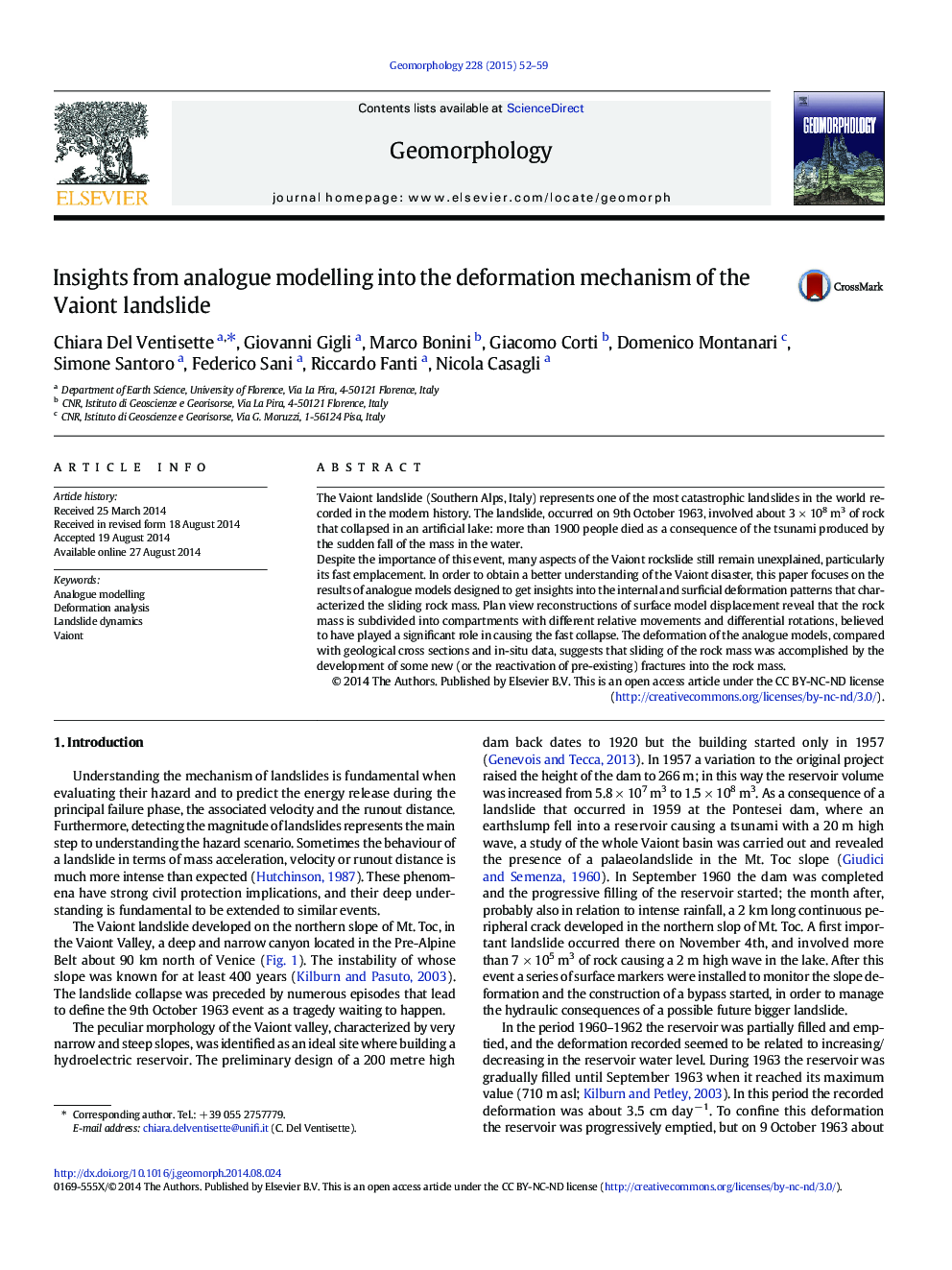| Article ID | Journal | Published Year | Pages | File Type |
|---|---|---|---|---|
| 6432236 | Geomorphology | 2015 | 8 Pages |
â¢We use analogue modelling to understand the deformation of the Vaiont landslide.â¢Internal structure is controlled by ramp-flat surface developed within the landslide.â¢Internal structures controlled the compartmentalization of the sliding mass.â¢Blocks rotation played a key role in unexpected acceleration of landslide.
The Vaiont landslide (Southern Alps, Italy) represents one of the most catastrophic landslides in the world recorded in the modern history. The landslide, occurred on 9th October 1963, involved about 3Â ÃÂ 108Â m3 of rock that collapsed in an artificial lake: more than 1900 people died as a consequence of the tsunami produced by the sudden fall of the mass in the water.Despite the importance of this event, many aspects of the Vaiont rockslide still remain unexplained, particularly its fast emplacement. In order to obtain a better understanding of the Vaiont disaster, this paper focuses on the results of analogue models designed to get insights into the internal and surficial deformation patterns that characterized the sliding rock mass. Plan view reconstructions of surface model displacement reveal that the rock mass is subdivided into compartments with different relative movements and differential rotations, believed to have played a significant role in causing the fast collapse. The deformation of the analogue models, compared with geological cross sections and in-situ data, suggests that sliding of the rock mass was accomplished by the development of some new (or the reactivation of pre-existing) fractures into the rock mass.
